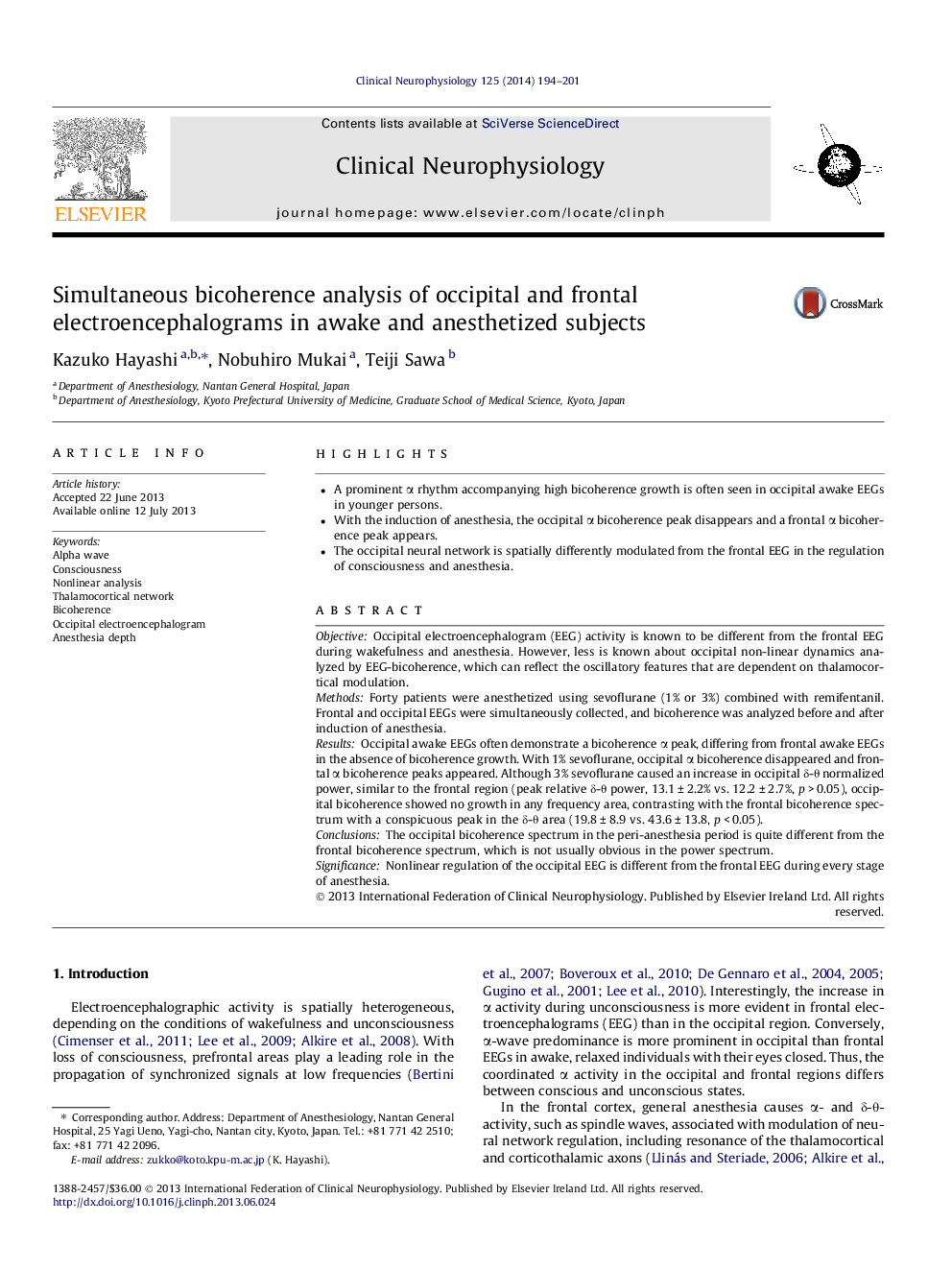| Article ID | Journal | Published Year | Pages | File Type |
|---|---|---|---|---|
| 3043650 | Clinical Neurophysiology | 2014 | 8 Pages |
•A prominent α rhythm accompanying high bicoherence growth is often seen in occipital awake EEGs in younger persons.•With the induction of anesthesia, the occipital α bicoherence peak disappears and a frontal α bicoherence peak appears.•The occipital neural network is spatially differently modulated from the frontal EEG in the regulation of consciousness and anesthesia.
ObjectiveOccipital electroencephalogram (EEG) activity is known to be different from the frontal EEG during wakefulness and anesthesia. However, less is known about occipital non-linear dynamics analyzed by EEG-bicoherence, which can reflect the oscillatory features that are dependent on thalamocortical modulation.MethodsForty patients were anesthetized using sevoflurane (1% or 3%) combined with remifentanil. Frontal and occipital EEGs were simultaneously collected, and bicoherence was analyzed before and after induction of anesthesia.ResultsOccipital awake EEGs often demonstrate a bicoherence α peak, differing from frontal awake EEGs in the absence of bicoherence growth. With 1% sevoflurane, occipital α bicoherence disappeared and frontal α bicoherence peaks appeared. Although 3% sevoflurane caused an increase in occipital δ-θ normalized power, similar to the frontal region (peak relative δ-θ power, 13.1 ± 2.2% vs. 12.2 ± 2.7%, p > 0.05), occipital bicoherence showed no growth in any frequency area, contrasting with the frontal bicoherence spectrum with a conspicuous peak in the δ-θ area (19.8 ± 8.9 vs. 43.6 ± 13.8, p < 0.05).ConclusionsThe occipital bicoherence spectrum in the peri-anesthesia period is quite different from the frontal bicoherence spectrum, which is not usually obvious in the power spectrum.SignificanceNonlinear regulation of the occipital EEG is different from the frontal EEG during every stage of anesthesia.
